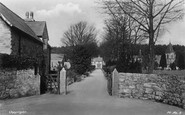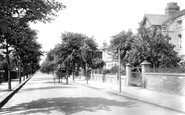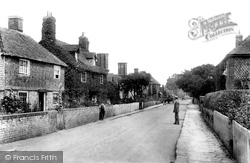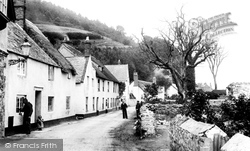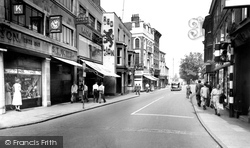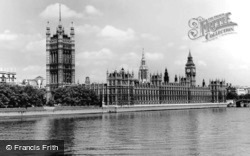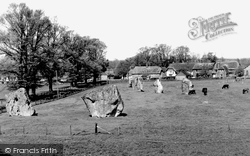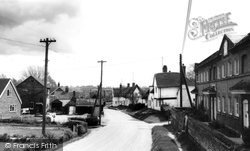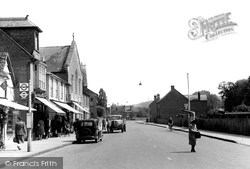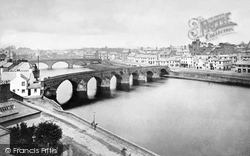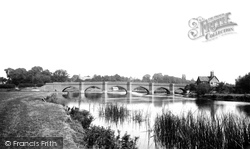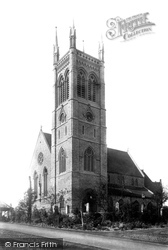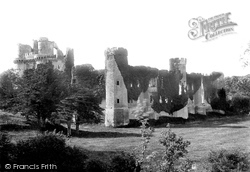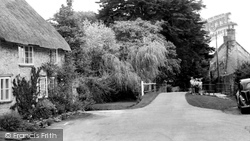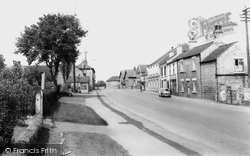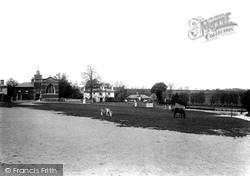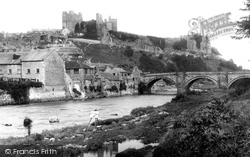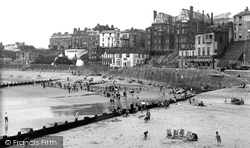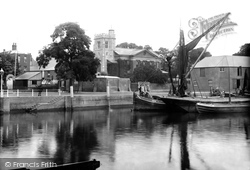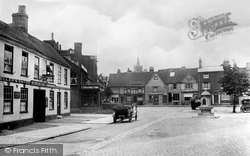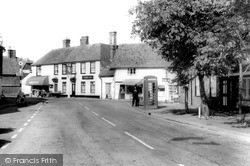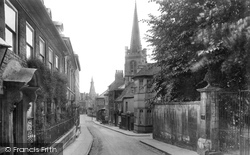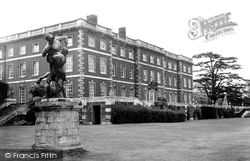Places
3 places found.
Those places high-lighted have photos. All locations may have maps, books and memories.
Photos
40 photos found. Showing results 141 to 40.
Maps
8 maps found.
Books
Sorry, no books were found that related to your search.
Memories
727 memories found. Showing results 71 to 80.
The Millhouse
I was born at home in the mill house at Kestle Mill. My mother ran a small Bed and Breakfast from there when I was little. My parents were Julia and Michael Soady. The midwife arrived in a red MG to deliver me. I have one picture of ...Read more
A memory of Kestle Mill in 1958 by
My Childhood Garden Part V
Beside the strawberry bed grew a large cooking apple tree that produced enormous green apples. We had a variety of both eating and cooking apple trees in the garden, the fruit from which was harvested and then stored ...Read more
A memory of Shamley Green in 1954 by
How I Chose Somerton To Live
Whilst serving in the Fleet Air Arm at RNAS Yeovilton the squadron I was serving on had an organised function in the Red Lion and I well remember standing outside and saying to my brother, who was also on the same ...Read more
A memory of Somerton in 1975 by
Loveday's And Blewers
My mum is a Loveday and her mum and dad, Sid and Amy, ran Kaysland caravan park. Mum married my dad George Blewer, and they had us three kids. Grandad Blewer had the timber yard and then my Uncle Johnny took it over. We ...Read more
A memory of West Kingsdown by
1946 1951 Age 2 Years To 7 Years
I was in St Claire's Orphanage with my two sisters after my father died in 1945. The Rev Mother Sister Phillomina had been a childhood friend of my mother's. This fact did not give us any added privileges. I ...Read more
A memory of Pantasaph in 1948 by
First Holiday
My first holiday was when I was 9 years old (in 1958) and my parents and I came to Goodrington. We stayed at Beech Hurst which if I remember correctly was in Youngs Park Road. It was lovely. I made friends with a girl who lived next ...Read more
A memory of Goodrington in 1958 by
Early Years In Hindley
What - no memories of Hindley? I was born in 1935 (nee Pennington) at a house in Liverpool Road, just up from the Strangeways Pub (The Paddock). The area was called Navvies' Lump, and although the address was "Liverpool ...Read more
A memory of Hindley in 1930 by
The Shops And Doctors At Sandiway 1956
We first arrived in Sandiway in 1956. I remember getting off the bus at the top of Mere Lane and walking down towards our new home in Cherry Lane. The house was a 'tied house' belonging to the ICI and our ...Read more
A memory of Sandiway in 1956 by
Holidays In Saham Hills
Just after the war we visited Saham Hills quite regular from Hull. We stayed with an aunt and uncle of my father's by the name of Smith. He was called Charlie, his wife was Pat and they had a son who was called young ...Read more
A memory of Saham Hills in 1950 by
St. Mary's High School
I'm wondering if anyone remembers St. Mary's High School in Western Road. I attended the school when I was very young in 1946-9, before my family emigrated first to Canada, then to the USA. My best friends were Zena O'Shea, ...Read more
A memory of Romford in 1949
Captions
241 captions found. Showing results 169 to 192.
This street scene shows some fine red brick, tile-hung, ivy-clad houses with beautiful old chimneys, lining the left-hand side of the road.
By 1903, the Red Lion, seen on the far left, has replaced a row of fishermen's cottages, but those beyond mostly survive, one being now The Old Harbour House Tea Rooms.
Other changes are that Mason's (left) is now Clarks, Radio House (next door but one) is now Dixon's, and Woolworth's have totally replaced the buildings beyond, the Red Lion (there is a commemorative plaque
Other changes are that Mason's (left) is now Clarks, Radio House (next door but one) is now Dixon's, and Woolworth's have totally replaced the buildings beyond, the Red Lion (there is a commemorative plaque
A little further north along Albert Embankment we get this wonderful view of the houses of Parliament.
The massive circle of stones virtually encompasses the village; here, we can see the Red Lion pub (the white gabled building), the chapel on the right, and domestic thatched housing all inside a stone
The imposing red brick almshouses (right), built by Edward Colman in 1731, were modernised in 1966.
The original Red Lion, after which the street was named, stood at the junction with Germain Street and, due to road improvements, was replaced by a 1930s neo-Georgian road house style pub.
Robert Burns came to the town in 1791 and lived with his wife and family in a house in Millhole Brae. Burns died in 1796 at the age of 36 and is buried in St Michael's Church.
George Gilbert Scott certainly transformed the village, 'restoring' the church, rebuilding the manor house and building the school.
Other buildings in the church and palace riverside group include some remaining fragments of the college of priests, chiefly the gatehouse and the master's house, the Archbishop's stables and the
It was built in the 1440s after Sir Roger Fiennes was granted a royal licence to crenellate (that is, build a battlemented house) using locally- made brick, and it is now a beautiful mellow red.
Beyond is a 17th-century manor house, now known as the Rookery.
Two miles south of Langold, Carlton in Lindrick is a village of two parts, the original village to the south and a large former colliery village with hard red brick semi-detached houses.
The late Norman church, distinguished by its red crenellated tower, contains some ancient wall paintings, including a fresco of the murder of Thomas a Becket.
Then comes the Presbytery and the red brick Roman Catholic church of St Mary and St John, designed by the Catholic architect Leonard Stokes, which opened in December 1893.
The castle was built from 1071 by Alan the Red as a defence station at the gateway to Swaledale.
The Red Lion Hotel (left) offers good food and public entertainment. The Bath Hotel (centre) is situated on the site of Bath House, which was smashed into pieces by a very high tide in 1836.
A water mill has stood here since Norman times, but this red brick corn mill dates from the early 1800s.
The rest of the church was rebuilt in red brick after the earlier had collapsed in April 1713.
By this time, one of the houses has become a shop. The Red Lion on the left is now the Hobgoblin.
In this quintessential village scene, we see the village bobby standing next to the red telephone box, with a café selling ice creams behind.
Just a few yards up the hill from All Saints' Church, Barn Hill is a far cry from the commercial bustle of Red Lion Square.
The present red-brick house supersedes the much smaller original one designed for Jebb by Sir William Chambers; although it is large, with re-used features salvaged from other demolished London buildings
Places (3)
Photos (40)
Memories (727)
Books (0)
Maps (8)



